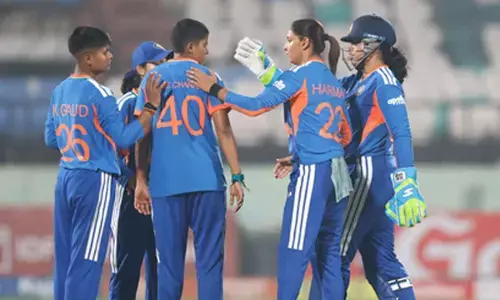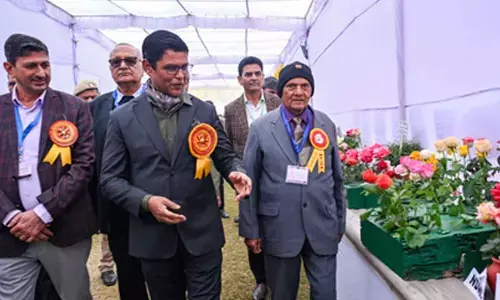Indian astronomers decode mystery of vampire star using data from AstroSat
Share :

A team of astronomers from the Indian Institute of Astrophysics (IIA), an autonomous institute of the Department of Science and Technology
New Delhi: A team of astronomers from the Indian Institute of Astrophysics (IIA), an autonomous institute of the Department of Science and Technology, made a groundbreaking discovery of a vampire star in the star cluster M67 using data from the UltraViolet Imaging Telescope, on board AstroSat, India's first dedicated space observatory.
M67 is a collection of over 500 stars that are loosely gravitationally bound, a grouping known as an open cluster.
The vampire star, called WOCS 9005, in the star cluster M67, is located in the constellation Cancer. It has been rejuvenating its youth by sucking up material from a companion.
The findings, to be published in The Astrophysical Journal Letters, shed light on a complex rejuvenation process, known as mass transfer in a binary system.
Using spectroscopy, a technique where the light of the star is dispersed into its colours like the rainbow, the team from IIA studied the surface composition of WOCS 9005.
"This star is expected to show chemistry very similar to our Sun, but we found that its atmosphere is rich in heavy elements such as barium, yttrium, and lanthanum," said lead author Harshit Pal, from IIA, who carried the study as a part of his MS thesis project at IISER Berhampur.
These heavy elements are rare and are found in a class of stars called 'asymptotic giant branch (AGB) stars', where abundant neutrons for a slowly occurring neutron capture process (s-process) are available to produce these heavy elements from lighter ones.
But, these AGB stars end their lives as white dwarfs (WDs) by shedding their outer layers which are enriched with heavy elements into their surroundings.
However, these AGB stars are more massive and evolved than WOCS 9005, leading to a puzzle.
"The presence of heavy elements in the spectrum pointed to a polluted atmosphere of the vampire star and the source of pollution being an external source," said Prof. Annapurni Subramaniam, co-author of the paper and Director IIA.
Subramaniam stated that "the external source is likely to be its binary companion, which must make the heavy elements when it passed through its AGB phase, and later became a white dwarf star".
The team took images of the vampire star and estimated its UV brightness using the UVIT on AstroSat.
With a temperature akin to the Sun, the vampire star is not expected to be bright in the UV. But the team "detected considerable UV brightness for this star".
The analysis proved "that it indeed originated from its hot and small companion".
Calculating theoretically, the scientists validated that this is indeed the remnant of the star that produced heavy elements.
















